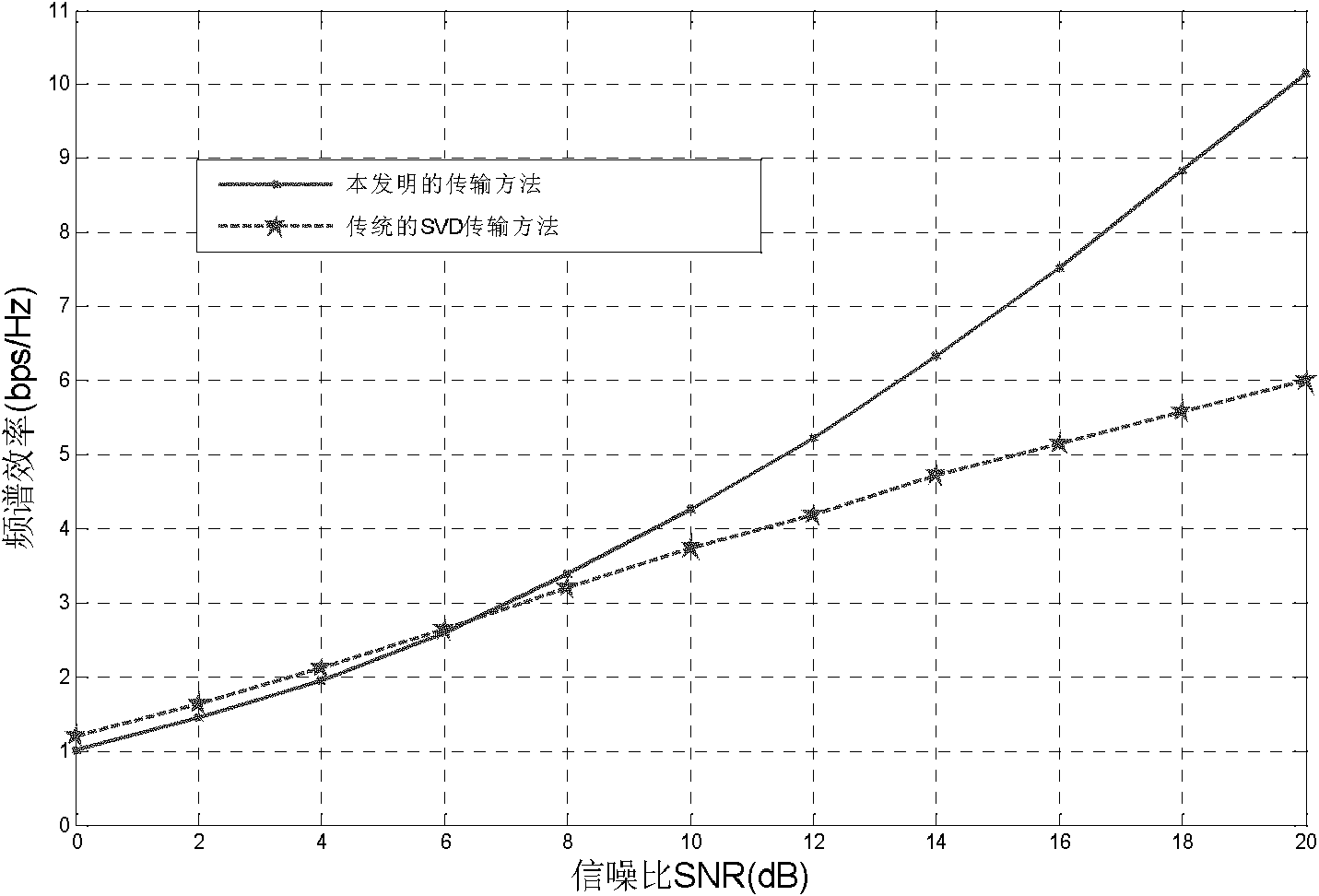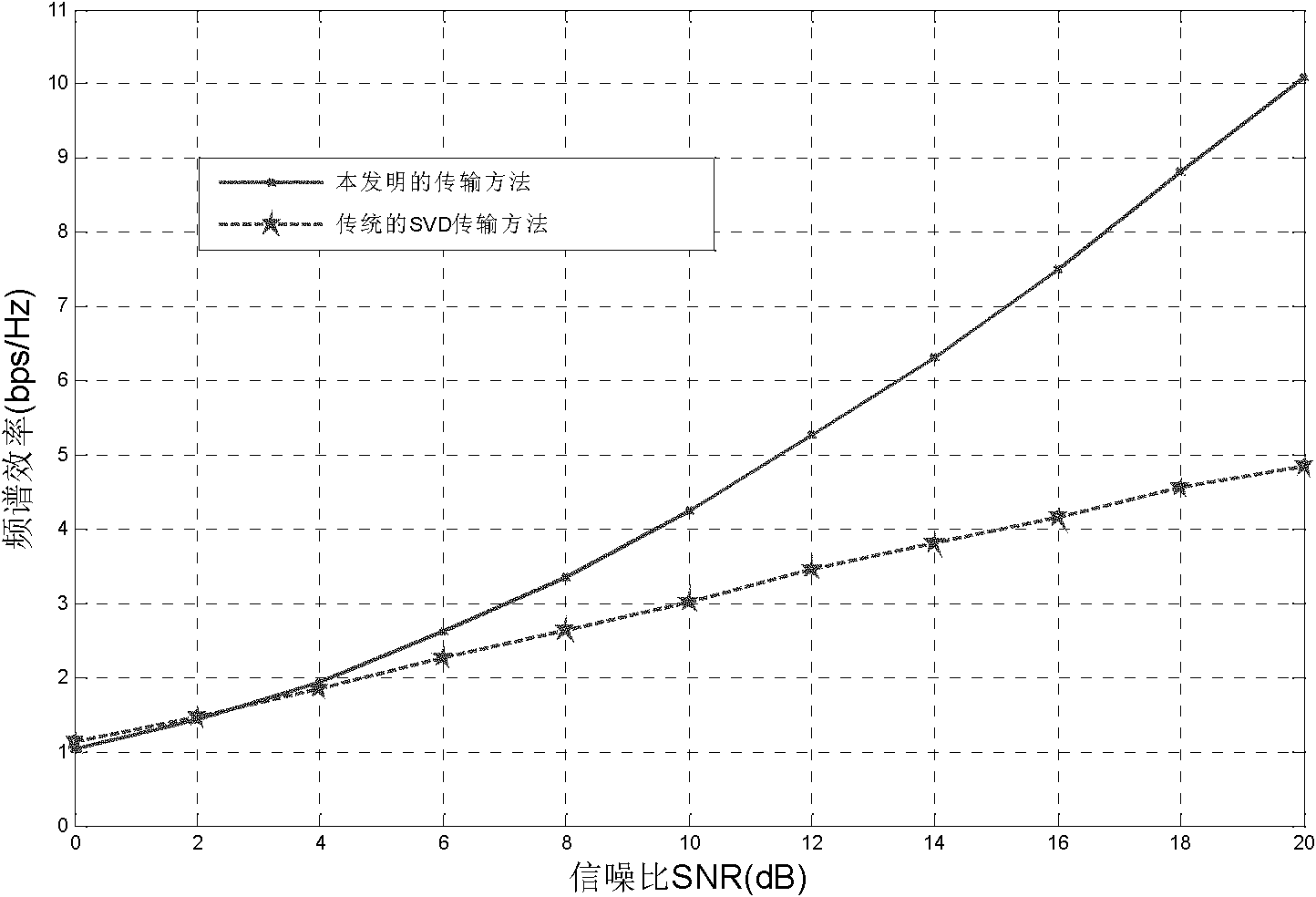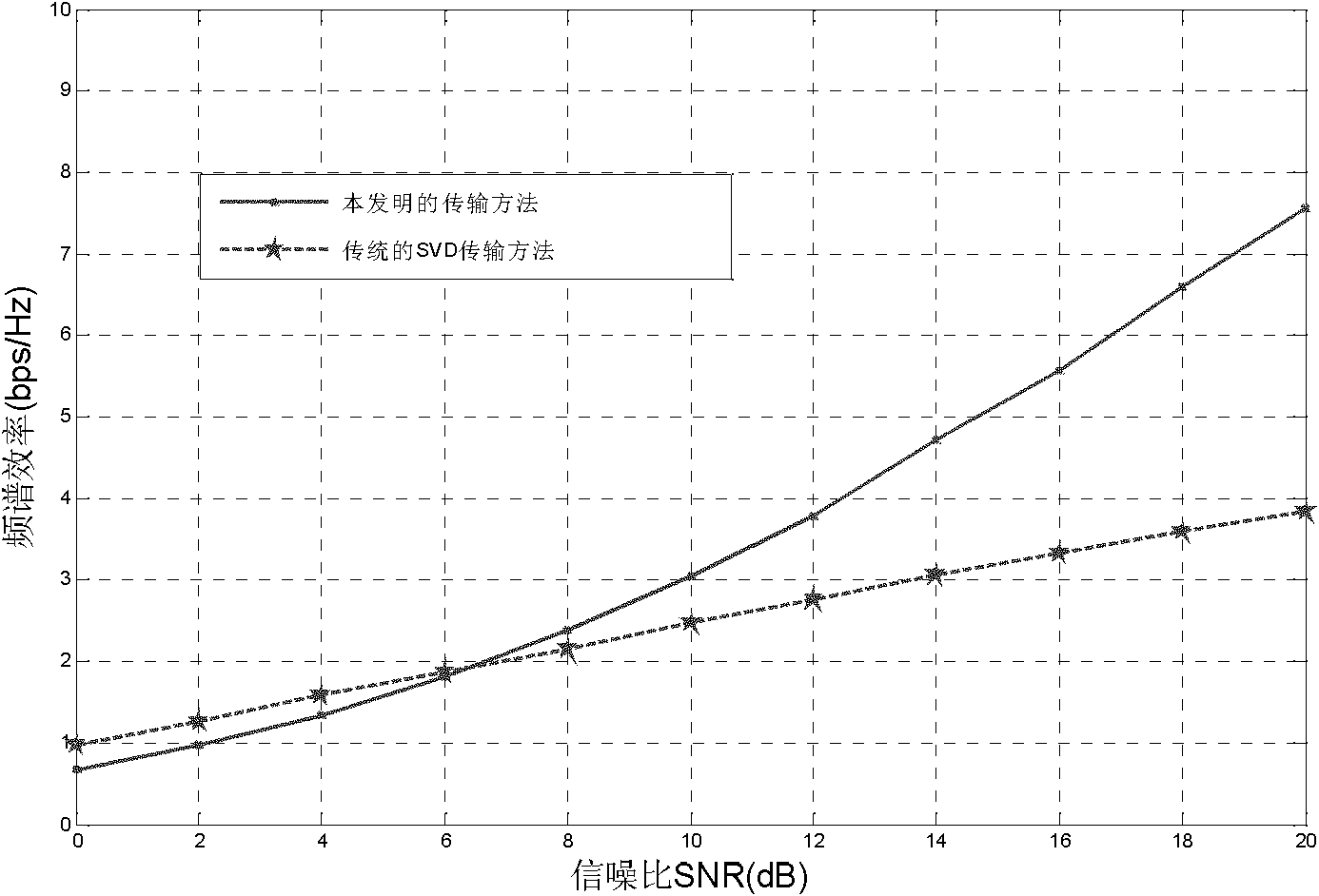Multi-user multi-relay downlink transmission method in multi-input multi-output cellular communication system
A cellular communication system, multi-user multi-relay technology, applied in the field of downlink multi-user multi-relay transmission, can solve the problems of underutilization of MIMO system space division channels, relay transmission timing sensitivity, system resource loss, etc. Timing Sensitivity, Interference Elimination, Effect of Improving Channel Gain
- Summary
- Abstract
- Description
- Claims
- Application Information
AI Technical Summary
Problems solved by technology
Method used
Image
Examples
Embodiment
[0023] A downlink multi-user multi-relay transmission method in a multi-input multi-output cellular communication system, the method is:
[0024] A. Tomlinson-Harashima precoding transmission
[0025] In the first time slot of each transmission process, a base station (BS) equipped with K (K>N, N≥2) antennas transmits data from each utilized relay station (RS i , i=1, 2,..., N) K antennas each select one antenna as the receiving antenna, and serve the user (MS m , m=N+1, N+2,..., K) L (L ≥ 2) antennas each select one antenna as the receiving antenna, there are K receiving antennas, and the K receiving antennas are sent to the base station The channels are combined into a complete channel matrix H, and the base station performs LQ decomposition on the channel matrix H to obtain the product of the block triangular matrix and the unitary matrix, and uses the block triangular matrix to pre-delete the data sent by the user, and the pre-deleted data is processed Modulus processing...
PUM
 Login to view more
Login to view more Abstract
Description
Claims
Application Information
 Login to view more
Login to view more - R&D Engineer
- R&D Manager
- IP Professional
- Industry Leading Data Capabilities
- Powerful AI technology
- Patent DNA Extraction
Browse by: Latest US Patents, China's latest patents, Technical Efficacy Thesaurus, Application Domain, Technology Topic.
© 2024 PatSnap. All rights reserved.Legal|Privacy policy|Modern Slavery Act Transparency Statement|Sitemap



